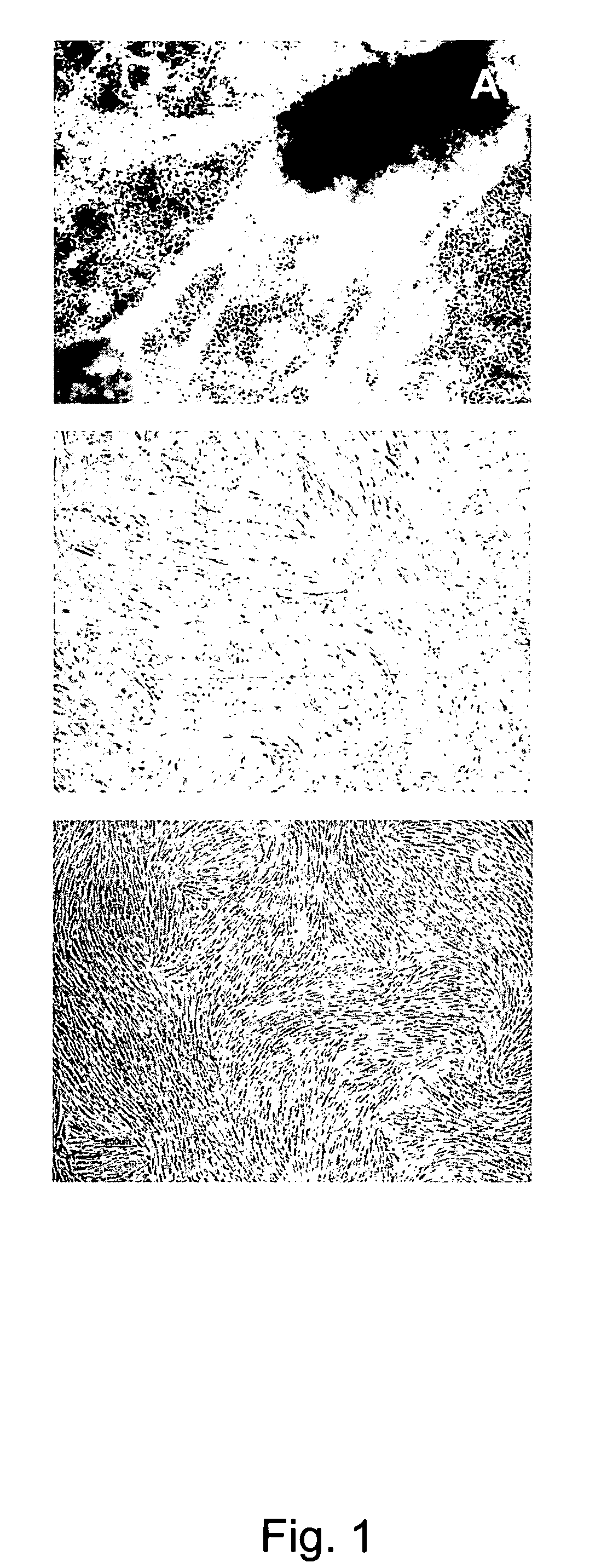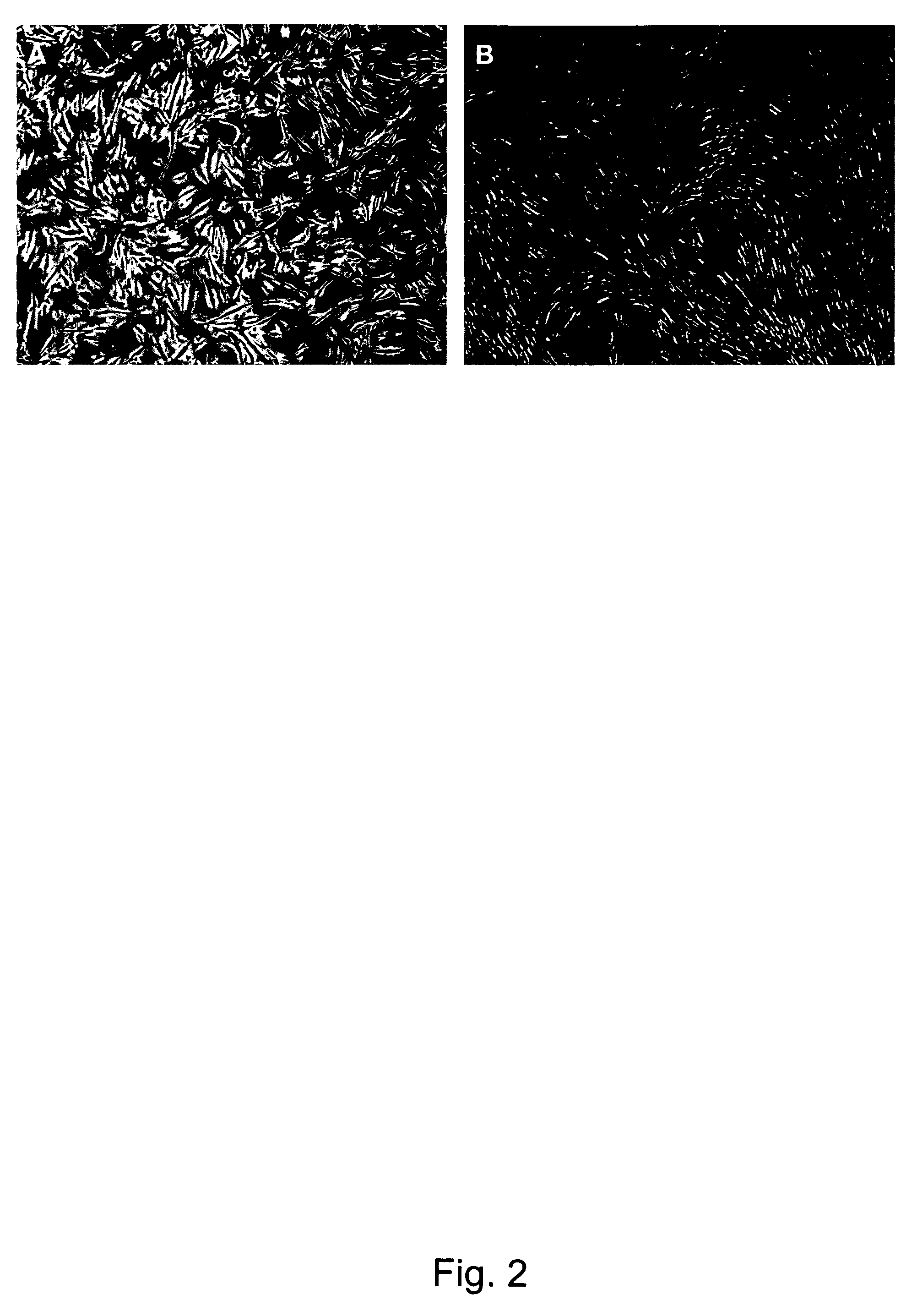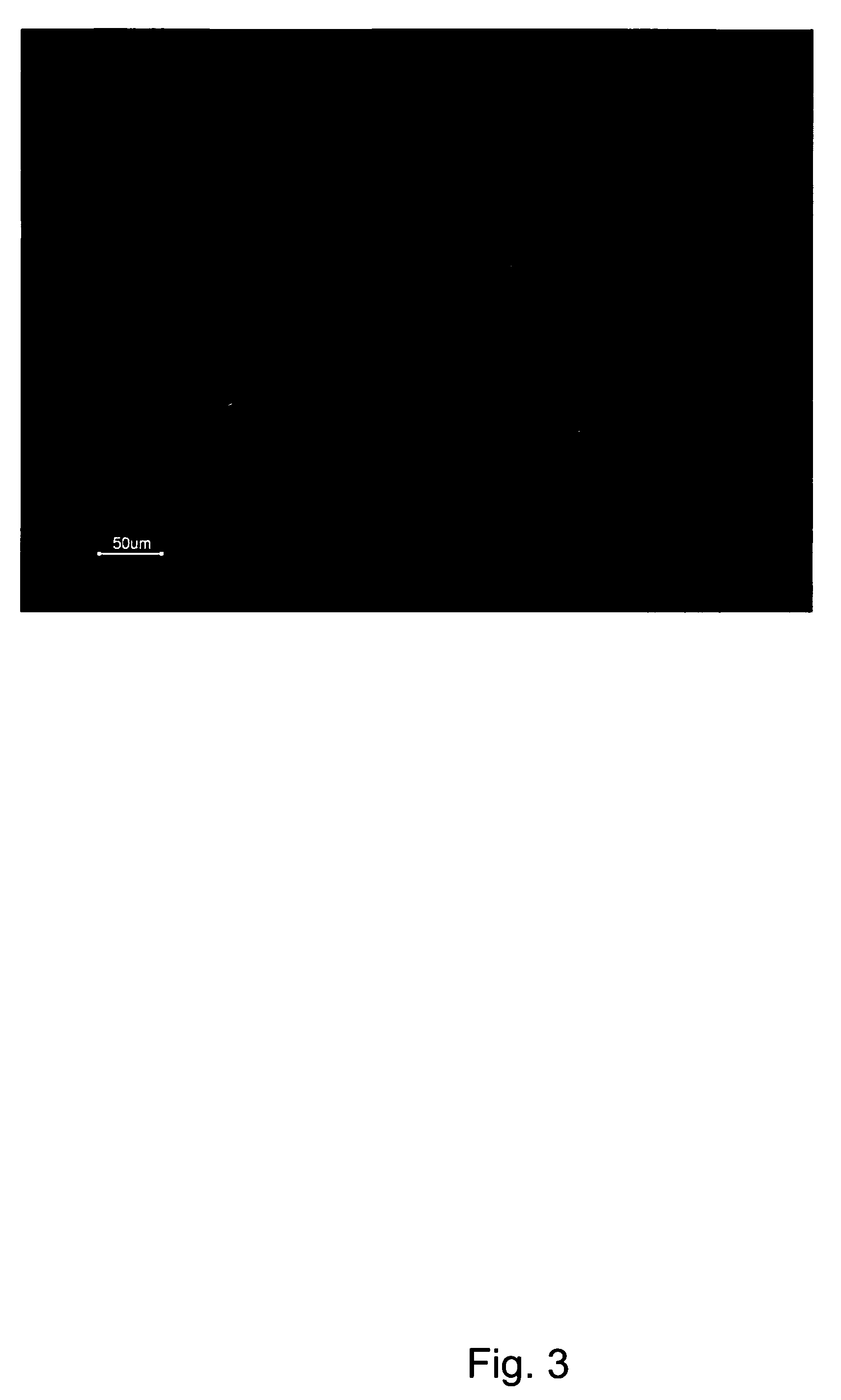Novel mesenchymal progenitor cells derived from human blastocyst-derived stem cells
a technology of mesenchymal progenitor cells and blastocysts, which is applied in the field of new mesenchymal progenitor cells derived from human blastocyst-derived stem cells, can solve the problems of tumor formation in the recipient and limited properties
- Summary
- Abstract
- Description
- Claims
- Application Information
AI Technical Summary
Benefits of technology
Problems solved by technology
Method used
Image
Examples
example 1
Starting Material
[0172]The starting material for the present invention is suitably pluripotent undifferentiated hBS cells, such as undifferentiated hBS cell lines. Such material can be obtained from Cellartis AB and is also available through the NIH stem cell registry http: / / stemcells.nih.gov / research / registry / . Cellartis AB has two hBS cell lines (SA001 and SA002) and one subclone of SA002 (SA002.5) available through the NIH. All the hBS cell lines used are approved and registered by the UK Stem Cell Bank Steering Committee and SA001, SA002, SA002.5 and SA611 are as well approved by MEXT (Japan).
[0173]Those hBS cell lines have been frequently used in the present invention. Characteristics of the hBS cells recommended as starting material are the following: positive for alkaline phosphatase, SSEA-3, SSEA-4, TRA 1-60, TRA 1-81, Oct-4, negative for SSEA-1, telomerase activity, and pluripotency in vitro and in vivo (the latter shown by teratoma formation in immuno-deficient mice). (Met...
example 2
Derivation of hBS-MP Cell Lines and Subsequent Culture of the hBS-MP Cell Lines
[0175]Undifferentiated hBS cells were removed from the supporting feeder layer, enzymatically dissociated and plated onto 0.1% porcine gelatin coated cell culture dishes (BD Biosciences, Bedford, Mass., USA) at 1.5×105 cells per cm2 in hBS-MP medium consisting of DMEM (high glucose with glutamax, without pyruvate)+10% fetal bovine serum (FBS)+10 ng / ml human recombinant basic fibroblast growth factor (hrbFGF) (all from Gibco / Invitrogen). The plated hBS cells were left to differentiate, i.e. no medium changes or passaging of cells to fresh culture environments, for 7 days in a humidified atmosphere at 37° C. and 5% CO2 resulting in a outgrowth of heterogeneous cell types. To initiate the derivation of hBS-MP cells the hBS cells were then passaged enzymatically (passage 1, p1) as a single cell suspension using TrypLE Select (Gibco, Invitrogen) to new gelatin coated culture dishes. In this and in all followin...
example 3
Xenofree Modification for Derivation and Expansion of hBS-MP Cell Lines
[0181]In the xeno-free variant of the protocols FBS was replaced with human serum (HS) in the hBS-MP medium. Human serum was prepared and tested as described earlier (Ellerström et. al. 2006). Human recombinant gelatin (Fibrogen, San Francisco, Calif.) was used to coat culture dishes instead of porcine gelatin. Alternatively non-coated tissue culture flasks were used for expansion with similar efficiency.
[0182]To derive hBS-MP cells from a xeno-free hBS cell line without contaminating the cell cultures with animal-protein all animal derived components were replaced with human derived or recombinant components. Human serum was used in the culture medium instead of FBS and human recombinant gelatin was used instead of porcine gelatin to coat culture dishes. Using these modified protocols a xeno-free hBS-MP cell line was derived from the xeno-free hBS cell line SA611 (Ellerström et al., 2006). Upon removal from the ...
PUM
 Login to View More
Login to View More Abstract
Description
Claims
Application Information
 Login to View More
Login to View More - R&D
- Intellectual Property
- Life Sciences
- Materials
- Tech Scout
- Unparalleled Data Quality
- Higher Quality Content
- 60% Fewer Hallucinations
Browse by: Latest US Patents, China's latest patents, Technical Efficacy Thesaurus, Application Domain, Technology Topic, Popular Technical Reports.
© 2025 PatSnap. All rights reserved.Legal|Privacy policy|Modern Slavery Act Transparency Statement|Sitemap|About US| Contact US: help@patsnap.com



